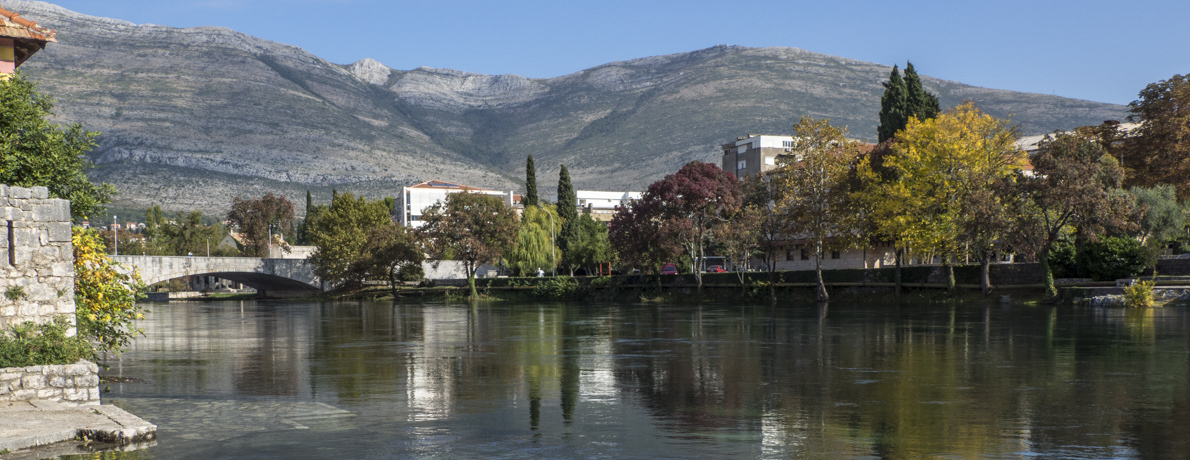
When I alighted in Trebinje I could not decide where to start. There was the cathedral beside me, a park ahead of me fronted by a large statue and the old city walls to my left. As I have a great affection for old towns I made my way along the city walls until I found an entrance.
Trebinje is a city located in Republika Srpska (Serb Republic), a small region of Bosnia and Herzegovina and predominantly Serbian. It has a lovely little old town. One of few I have not had to battle through crowds to appreciate the architecture. And the architecture here is unusual as this old town, also known as Kastel, was built by the Turks during the seventeenth century. Built on the site of the original town it was a part of the re-organisation of Turkish territories. It stands on the bank of the River Trebišnjica. I was soon drawn inside through one of the city gates.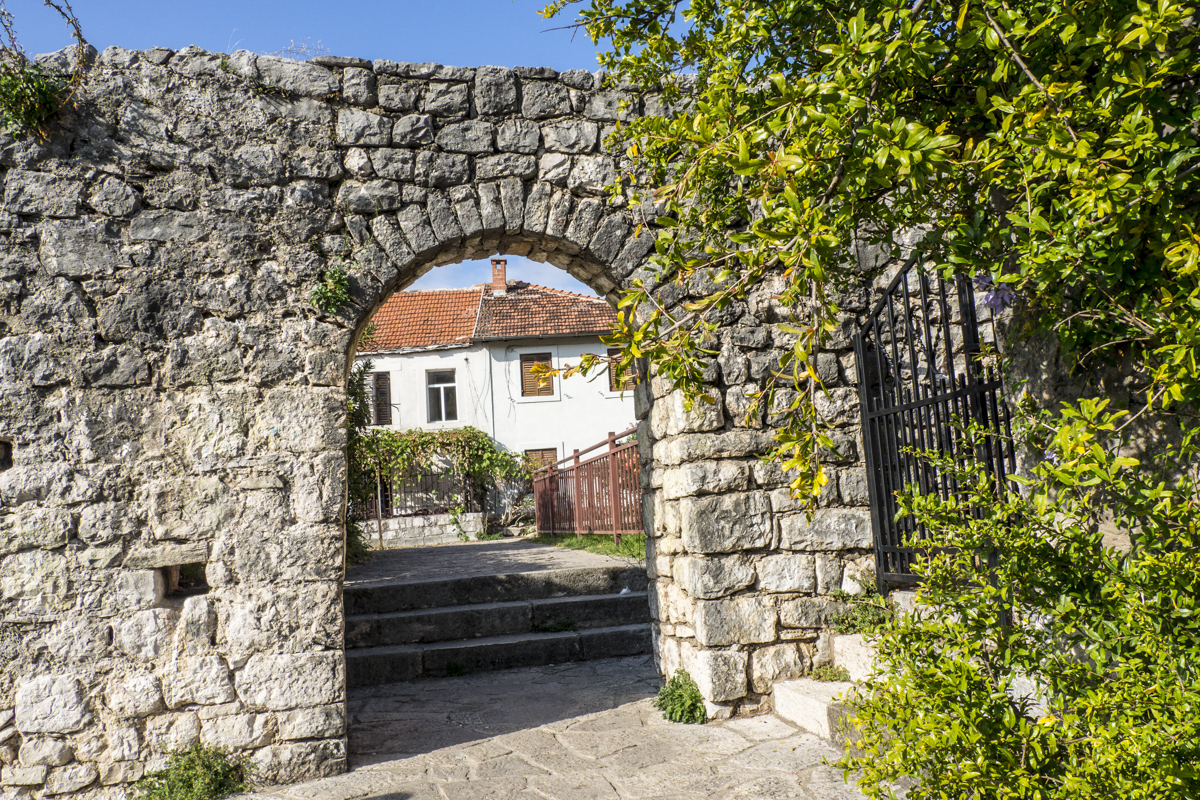
The Old Town of Trebinje in Bosnia and Herzegovina
Initially, Kastel was triangular in shape but it became rounded over time developing into its final shape with towers, canals and ramparts by 1740. In front of the West Gate, the historic entrance to the old town there was a drawbridge that crossed a moat. Later, fear of epidemic diseases later led to this moat being filled in.

The most important person related to the development of the Old Town of Trebinje
old town was Osman Pasha. It was he who envisaged the old town as a fort and built the moat encircling the walls and flowing into the River Trebišnjica. It was during his reign that two mosques were built. The first one was built in the name of Sultan Ahmed III and this is why it also became known as the Emperor’s Mosque. The second, the Osman-pasha mosque built in 1726 was Osman Pasha’s legacy to Trebinje. But it was also his downfall as he was accused of building a more beautiful mosque in his own name that he had in the emperor’s name. Sultan Ahmed III ordered his execution and despite Osman Pasha travelling to Istanbul to beg for mercy this order was carried out. He was executed in 1729. Close to this mosque is another gate that leads down to the bank of the Trebišnjica River.

Back in the old town I stopped to admire the majestic building that houses the Museum of Herzegovina. This museum was inspired by the poet and diplomat Jovan Dučić who was born in Trebinje and throughout his life constantly re-visited the town. It opened in 1952 and features both permanent displays and temporary exhibitions. These include a private collection of valuable works of art, mosaics, tapestries and Japanese needlework that Dučić had donated to Trebinje. Next to the museum is the old pigeon post office that has undergone a complete restoration. This intriguing monument is the only one left in the country. It was set up by Austro-Hungarian officials during their occupation of Bosnia. And there is still a flavour of this era left by the Austro-Hungarian Empire. Between the end of the nineteenth century and the beginning of the twentieth century the Austrians turned Trebinje into a military outpost on its southern boundary. Fortified forts were built on the surrounding hills and were so impressive they earnt the nickname the Balkan Maginot Line. Today most of these forts lie in ruins. After leaving the museum I made my way through a narrow gate and on to the bank of the River of the River Trebišnjica.
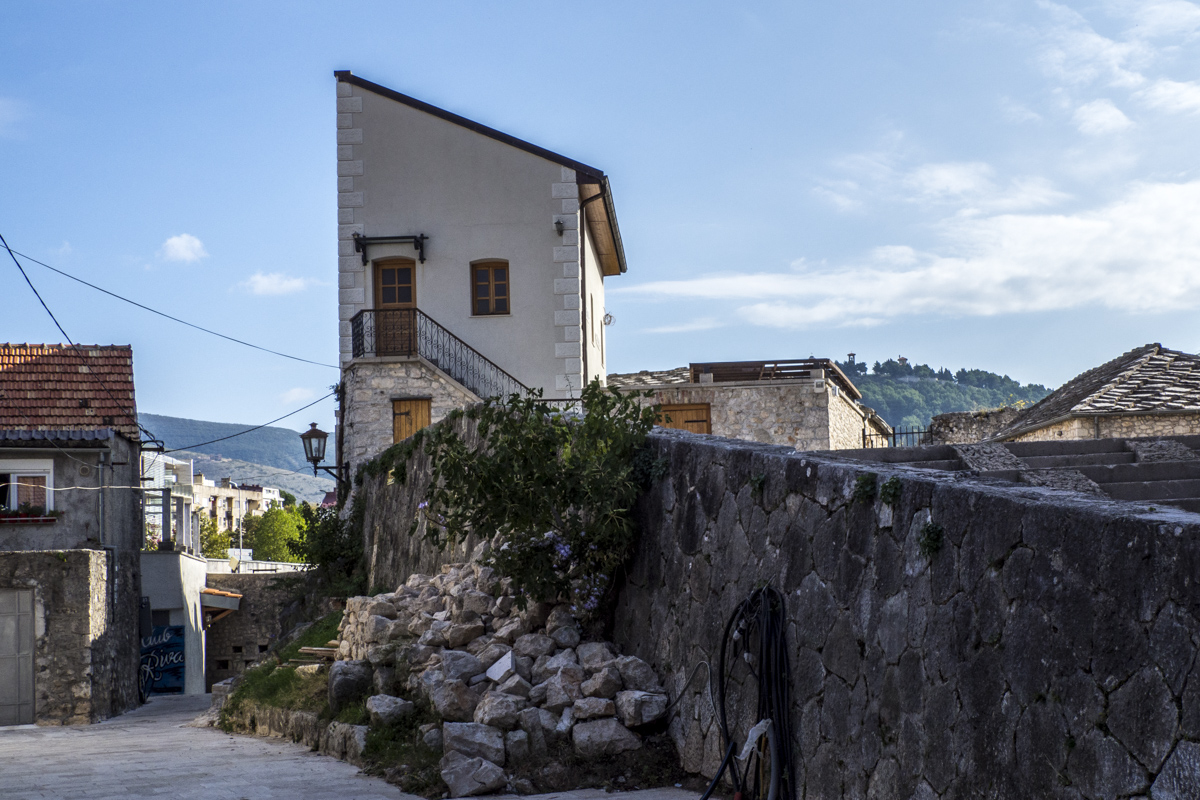
Trebišnjica River in Trebinje in Bosnia and Herzegovina
The Trebišnjica River is a very important part of the history of Trebinje. Watching its waters flow slowly past me it was hard to imagine the hardship this river brought to the inhabitants of the town when its ferocious floods destroyed crops and homes. When its power was harnessed through the use of waterwheels brought over from Egypt it provided power to run mills and provide irrigation for the surrounding fields. From my view point I could see the Arslanagic Bridge. This old bridge was built by the Ottomans. Originally this bridge was further upstream tbut during the 1970s it was moved, stone by stone to make way for the hydropower station. High on the hill beyond the bridge I could see the Hercegovačka Gračanica church and monastery. Strangely this is a new building, a copy of a monastery in Kosovo. Although it was only built in 2000 its Byzantine architecture gives the impression that it is much older. Stepping back into the old town behind me I made my way back towards the town itself passing Andjelka’s Gate on my way.

Andjelka’s Gate in the Old Town of Trebinje in Bosnia and Herzegovina
Andjelka’s Gate also referred to as Angelina’s Gate in Trebinje’s Old Town means more to the Serbs and Croats than it does to foreign visitors. This small section of the old city walls was renovated to be used in a very popular television series, the Wounded Eagle. Filmed in 2008 it became one of the most watched Serbian series and re-runs are even more popular. It was through this gate that the heroine entered the courtyard of a house that is actually situated in Belgrade. The gate has become a popular tourist attraction and visitors are keen to have their photos taken sitting on the bench in front of the gate. Beautifully renovated it does have the appearance of being something special. As I I made my way back into the town through the West Gate, dubbed the tunnel by locals, I was still wondering where everyone was. It was a Saturday yet the streets I had wandered through were very quiet. I was soon to find out. Close by I found the main square of the town.

Freedom Square in Trebinje in Bosnia and Herzegovina
Standing proud in the centre of the huge Freedom Square (Zelena Pijaca) on a tall column, is the Monument to the Liberators. It marks the place where seventy-seven men and two women were hanged during the First World War. The monument was placed here in 1938, the twentieth anniversary of the liberation of Trebinje. On top of the column is an exquisite statue of an angel in Nemanjić style fashioned from a sketch by Dučić. This angel holds a sword representing his role as keeper of the peace and freedom of the town of Trebinje. At his feet is a snake, a symbol of evil and suffering. However, the pillar on which he stands is so tall a telephoto lens is necessary to appreciate its magnificence.
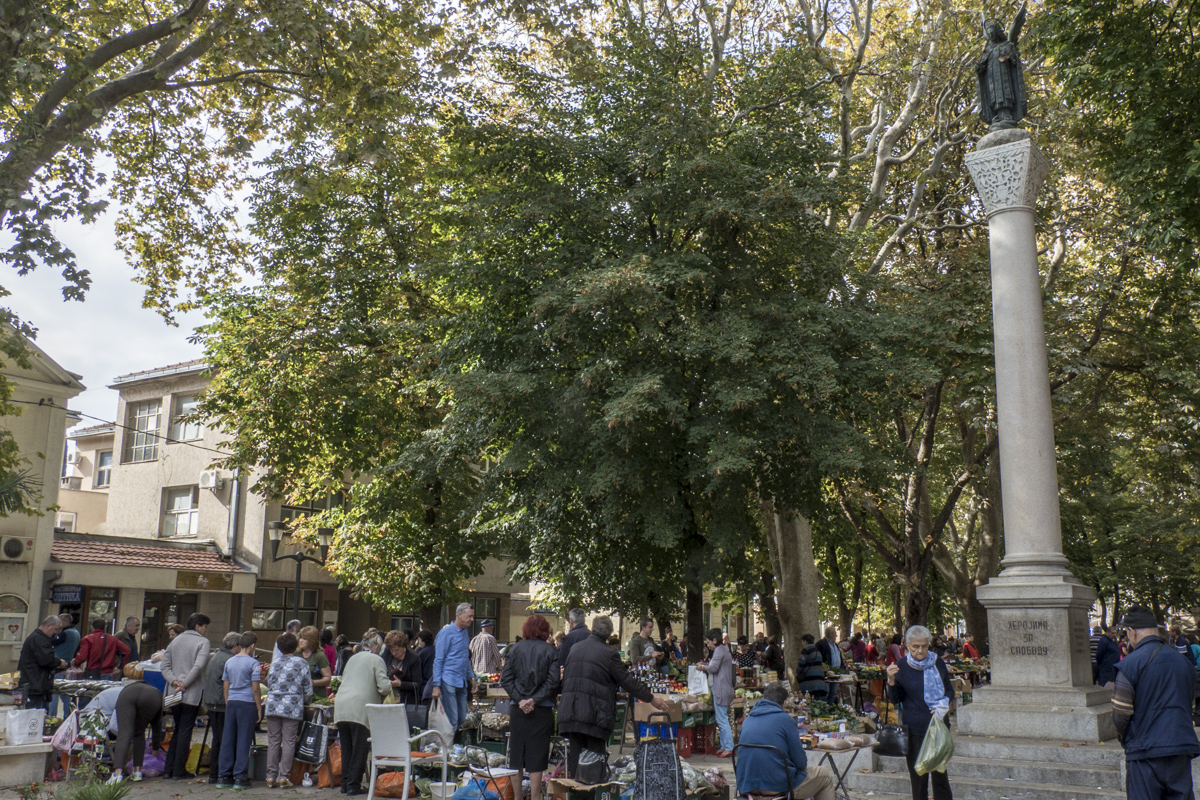
Every day the Green Market takes place in this square under the shade of the plane trees that surround it. These trees are a heritage from the days when the town was part of the Austro-Habsburg Empire. According to legend when the Austrian Lieutenant General Đuro Baron Babić was commander of Trebinje his sixteen-year-old daughter died he planted sixteen plane trees in her memory. But it is a historical fact that following the annexation of Bosnia and Herzegovina in 1878 a burial ground was discovered in the city centre. It was relocated and sixteen plane trees were planted on the site. Since then more trees have been planted in the city and today there are nearly one hundred. It is a colourful scene with bright blooms clustered around the flower stalls and hand-knitted accessories inviting preparation for the cold winters. Visitors take advantage of a second monument in the square, the Fountain of Baron Babich which is still a source of fresh water. This commemorative fountain is dedicated to the Austrian, Lieutenant General Đuro Baron Babić, once governor of Trebinje. It was cast in 1890, and placed on the site of the old medieval market. Dučić Park is close to the market and I made my way there curious to establish the identity of the statue guarding the entrance.
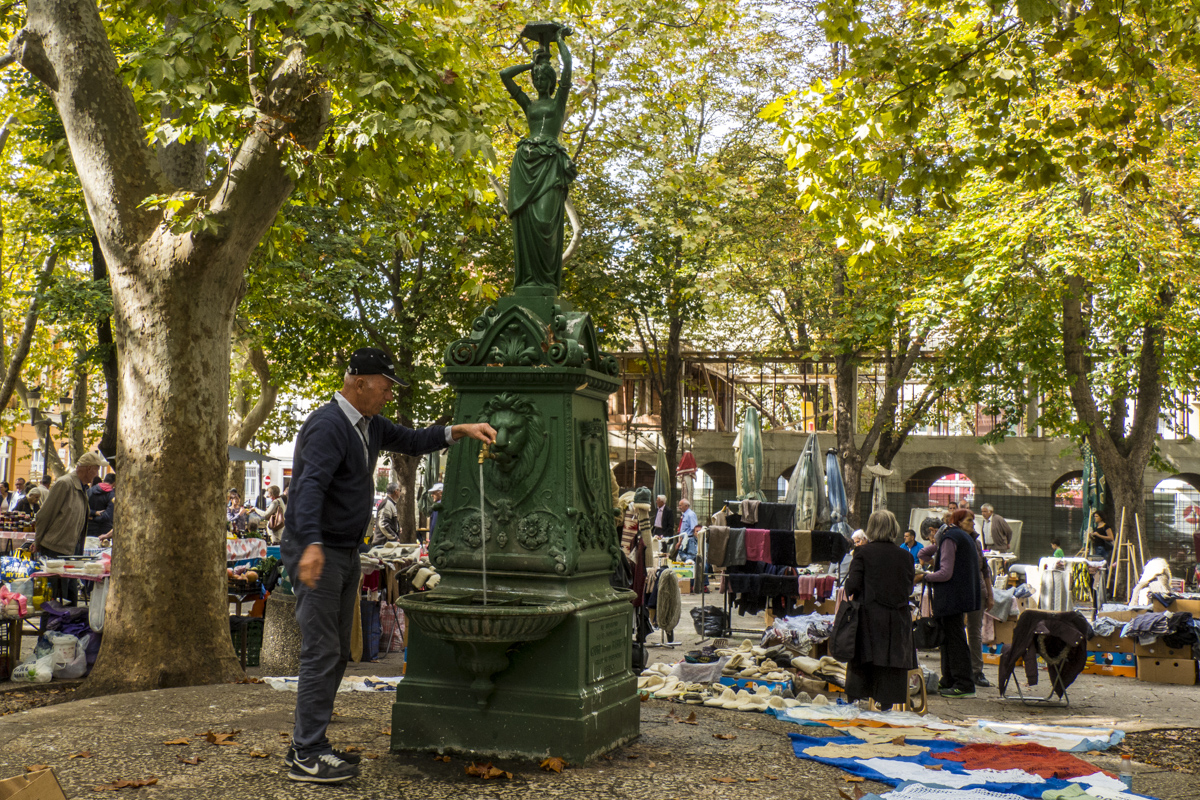
Dučić Park in Trebinje in Bosnia and Herzegovina
The imposing statue at the entrance to this park is an imposing statue of Jovan Dučić famous poet and diplomat born in Trebinje and for whom this park is named. This monument was placed here in 1997. As it is opposite the monument of Petar II, another famous Balkan poet, this square is also called Poet square. Throughout his life Dučić often returned to his place of birth. He loved his dear Trebinje and he dreamt about it and wrote about it. Not only did he leave a significant legacy to the city when he died in America in 1943 but during his lifetime he used his own money to enhance the city. This included a flower square that is now Dučić Park. His final wish was that a beautiful orthodox church resembling Gračanica in Kosovo should be built in Trebinje where his body would be moved and buried. This last wish came true and in the year 2000 his remains were brought back to Trebinje and buried on Crkvina hill, in Herzegovinian Gračanica which was dedicated to ‘The Annunciation to the Blessed Virgin Mary’.
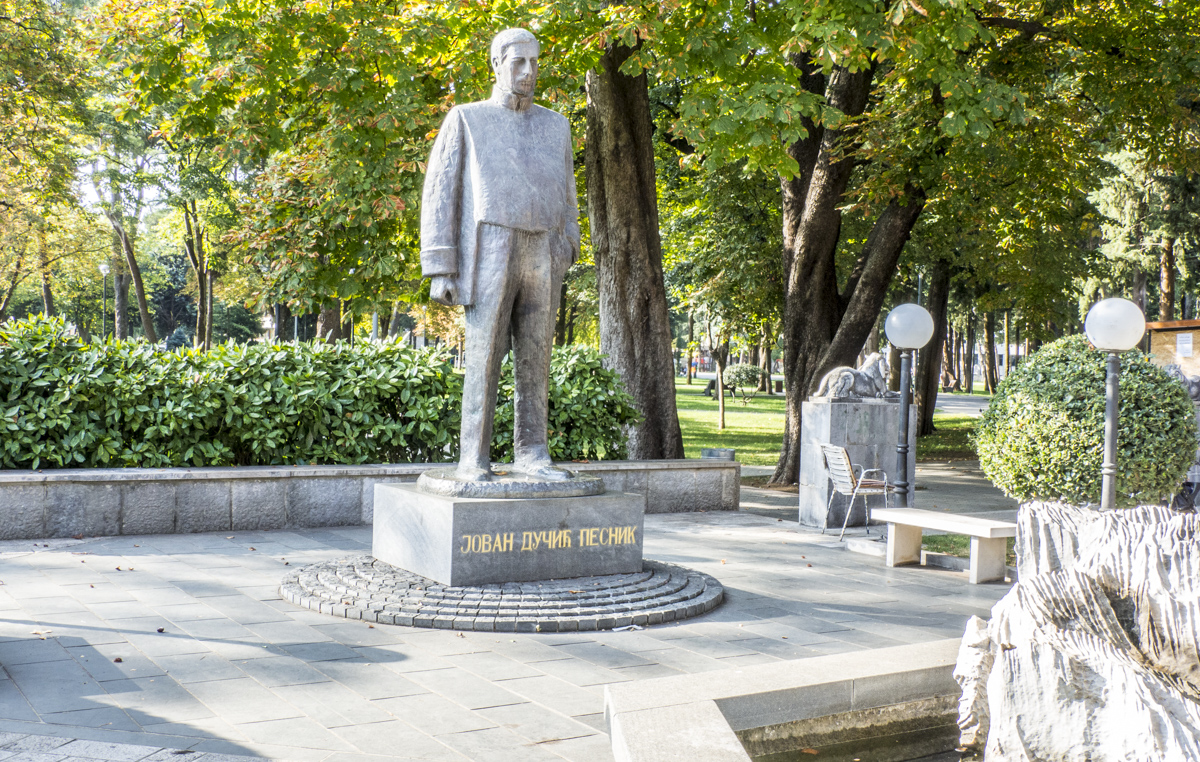
Inside Dučić Park is another church the orthodox Church of the Holy Transfiguration of God (Saborna crkva sv Preobrazenja). This church also has a residence for its priests and a library. Architecturally it is a mixture of various styles predominantly Roman and Byzantine. The building of this church began in 1888 and took twenty years to complete. The church stands in a pretty garden that includes a monument honouring the Serbian patriarch Pavle. My circuit of the town complete I was now back at its cathedral.

The Cathedral in Trebinje in Bosnia and Herzegovina
Although this Catholic Cathedral of The Holy Mother of God was built in the nineteenth century the Trebinje-Mrkanj diocese is one of the oldest in Bosnia and Herzegovina and was first mentioned in a papal bull in 1022. The construction of this cathedral was started in 1880 immediately after Austro-Hungarian invasion and was finished in 1884. This was an ordinary county church until 1984, when it was proclaimed Cathedral church, celebrating one thousand years of the Trebinje diocese and one hundred years of the church.
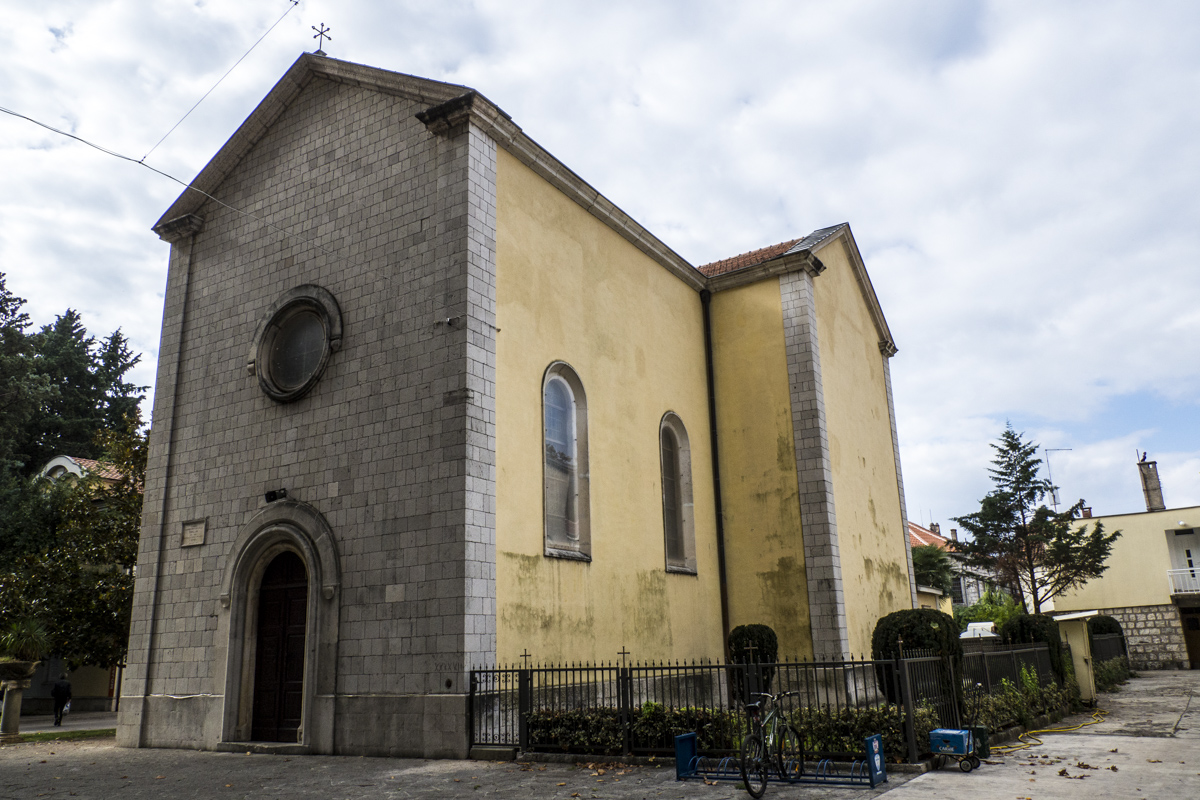
Where to Stay
When I visited Trebinje I was staying in Mlini in Croatia at the Mlini Hotel on the Dubrovnik Riviera – ideally placed for trips into Dubrovnik and over the nearby border to Bosnia Herzegovina and Trebinje.
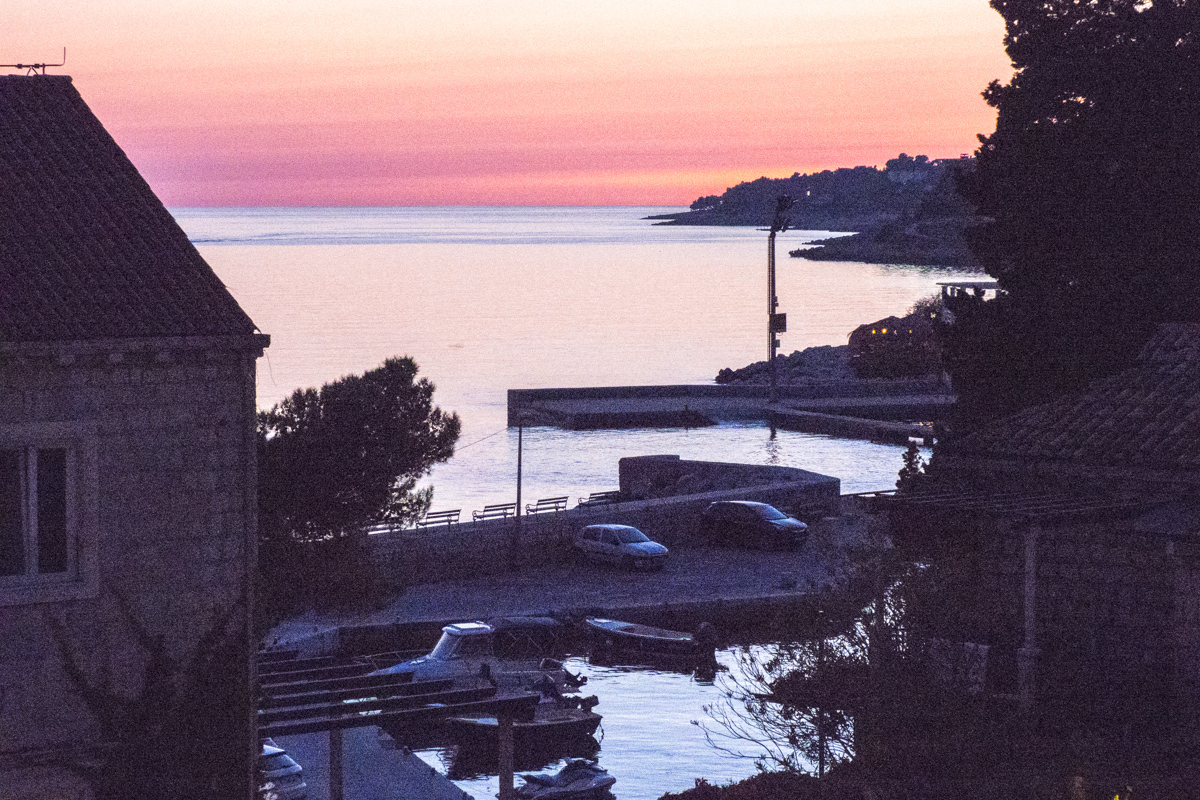
How to get to Trebinje in Bosnia and Herzegovina
Fly to Dubrovnik then enjoy the two-hour scenic journey – But a hire car may be a better option in order to explore further afield. I stayed in Mlini in Croatia and visited Trebinje on a day trip.
Available on GPSmyCity.com
This article is now featured on GPSmyCity. To download this article for offline reading or travel directions to the attractions highlighted in this article, go to Walking Tours in Trebinje on GPSmyCity
This article is based on the personal experience of Valery, an ExperiencedTraveller. I visited Trebinje on a trip organised by Solos Holidays.